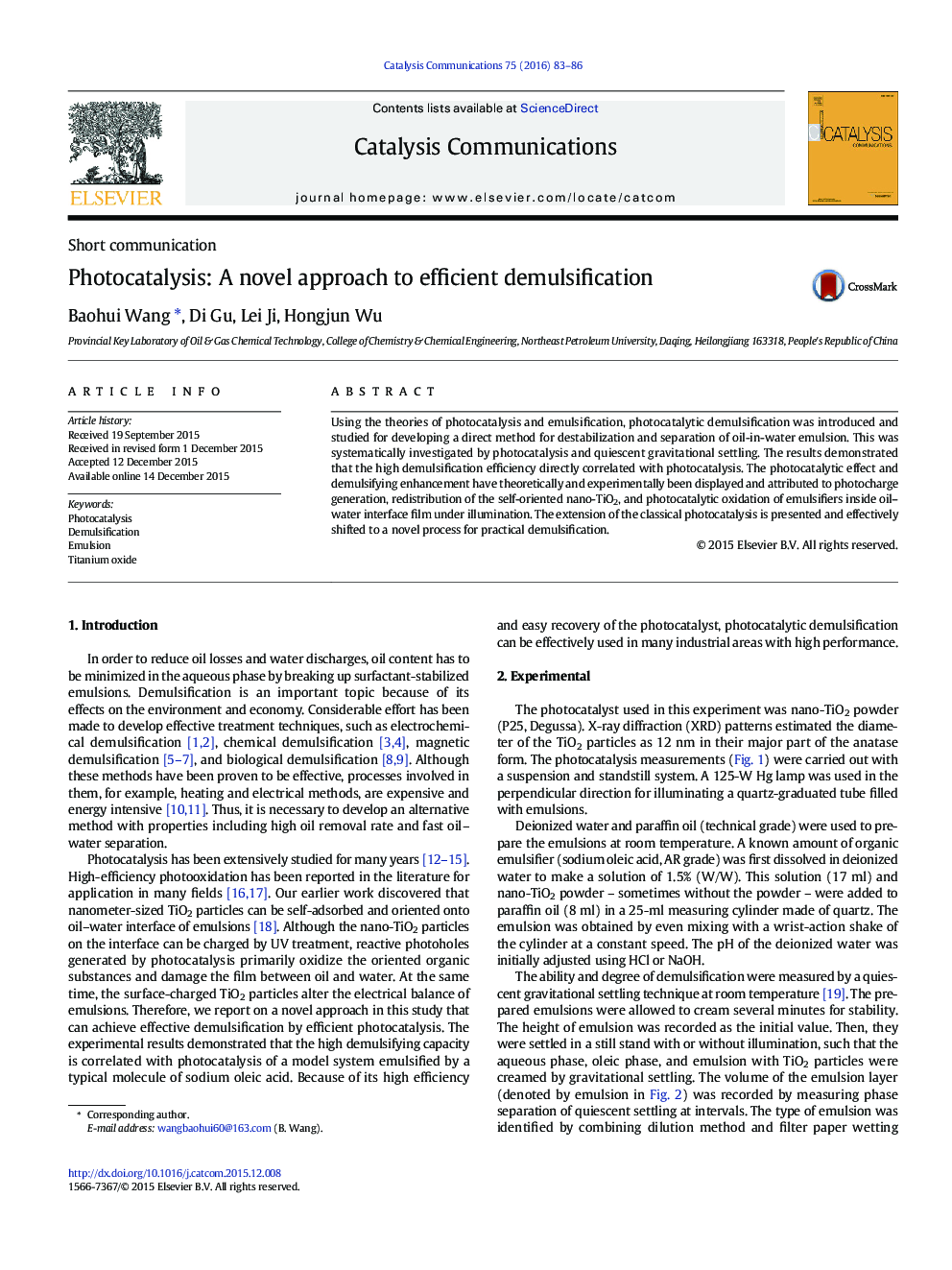| کد مقاله | کد نشریه | سال انتشار | مقاله انگلیسی | نسخه تمام متن |
|---|---|---|---|---|
| 49223 | 46724 | 2016 | 4 صفحه PDF | دانلود رایگان |
• Photocatalysis is presented and shifted to a novel process for demulsification.
• High demulsification efficiency is directly correlated with photocatalysis.
• Demulsification is attributed to photocharge generation and photocatalytic oxidation.
• Microscopic images show the existence of the stable interface and dispersed TiO2.
• Photo-demulsification has wide applications because of its high efficiency.
Using the theories of photocatalysis and emulsification, photocatalytic demulsification was introduced and studied for developing a direct method for destabilization and separation of oil-in-water emulsion. This was systematically investigated by photocatalysis and quiescent gravitational settling. The results demonstrated that the high demulsification efficiency directly correlated with photocatalysis. The photocatalytic effect and demulsifying enhancement have theoretically and experimentally been displayed and attributed to photocharge generation, redistribution of the self-oriented nano-TiO2, and photocatalytic oxidation of emulsifiers inside oil–water interface film under illumination. The extension of the classical photocatalysis is presented and effectively shifted to a novel process for practical demulsification.
Schematic diagram of emulsion microstructure and photocatalytic mechanism.Figure optionsDownload as PowerPoint slide
Journal: Catalysis Communications - Volume 75, 5 February 2016, Pages 83–86
